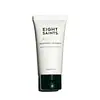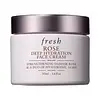What's inside
What's inside
 Key Ingredients
Key Ingredients

 Benefits
Benefits

 Concerns
Concerns

 Ingredients Side-by-side
Ingredients Side-by-side

Aloe Barbadensis Leaf
MaskingWater
Skin ConditioningSunfloweramide Mea
CleansingIsopropyl Palmitate
EmollientGlyceryl Stearate Se
EmulsifyingCetyl Alcohol
EmollientHyaluronic Acid
HumectantStearic Acid
CleansingShellac
EmollientSimmondsia Chinensis Seed Oil
EmollientPantothenic Acid
Skin ConditioningTocopherol
AntioxidantCitrus Aurantium Bergamia Fruit Oil
MaskingMelissa Officinalis Leaf Oil
MaskingGlycolic Acid
BufferingGanoderma Lucidum Extract
Skin ProtectingSalix Alba Bark Extract
AstringentDipotassium Glycyrrhizate
HumectantMelissa Officinalis Flower/Leaf/Stem Extract
SoothingPanax Ginseng Root Water
MaskingAnise Alcohol
PerfumingHorseradish Peroxidase
Skin ConditioningSchisandrin
BleachingHorse Fat
Skin ConditioningTaraxacum Officinale Extract
Skin ConditioningCentella Asiatica Extract
CleansingPelargonium Graveolens Oil
MaskingCamellia Sinensis Leaf Extract
AntimicrobialXanthan Gum
EmulsifyingPhenoxyethanol
PreservativeEthylhexylglycerin
Skin ConditioningCitrus Aurantium Bergamia Peel Oil
Citrus Aurantium Dulcis Peel Oil
MaskingCitrus Limon Peel Oil
MaskingRose Flower Oil
MaskingAloe Barbadensis Leaf, Water, Sunfloweramide Mea, Isopropyl Palmitate, Glyceryl Stearate Se, Cetyl Alcohol, Hyaluronic Acid, Stearic Acid, Shellac, Simmondsia Chinensis Seed Oil, Pantothenic Acid, Tocopherol, Citrus Aurantium Bergamia Fruit Oil, Melissa Officinalis Leaf Oil, Glycolic Acid, Ganoderma Lucidum Extract, Salix Alba Bark Extract, Dipotassium Glycyrrhizate, Melissa Officinalis Flower/Leaf/Stem Extract, Panax Ginseng Root Water, Anise Alcohol, Horseradish Peroxidase, Schisandrin, Horse Fat, Taraxacum Officinale Extract, Centella Asiatica Extract, Pelargonium Graveolens Oil, Camellia Sinensis Leaf Extract, Xanthan Gum, Phenoxyethanol, Ethylhexylglycerin, Citrus Aurantium Bergamia Peel Oil, Citrus Aurantium Dulcis Peel Oil, Citrus Limon Peel Oil, Rose Flower Oil
Water
Skin ConditioningGlycerin
HumectantC15-19 Alkane
SolventButylene Glycol
HumectantPropanediol
SolventIsostearyl Isostearate
EmollientHexyl Laurate
EmollientPentylene Glycol
Skin Conditioning1,2-Hexanediol
Skin ConditioningBehenyl Alcohol
EmollientSteareth-2
EmulsifyingPrunus Domestica Seed Oil
Skin ConditioningRosa Damascena Flower Water
MaskingRosa Damascena Extract
MaskingAngelica Keiskei Leaf/Stem Extract
Skin ConditioningAcacia Senegal Gum
MaskingRosa Damascena Flower Extract
MaskingRosa Damascena Flower Oil
MaskingCucumis Sativus Fruit Extract
EmollientTocopheryl Acetate
AntioxidantSilica
AbrasiveDimethicone
EmollientAmmonium Acryloyldimethyltaurate/Vp Copolymer
Steareth-21
CleansingHydroxyethyl Acrylate/Sodium Acryloyldimethyl Taurate Copolymer
Emulsion StabilisingSodium Hyaluronate
HumectantSqualane
EmollientAcrylates/C10-30 Alkyl Acrylate Crosspolymer
Emulsion StabilisingTromethamine
BufferingXanthan Gum
EmulsifyingDimethiconol
EmollientPolysorbate 60
EmulsifyingCaprylic/Capric Triglyceride
MaskingAlgin
MaskingSodium Chloride
MaskingPentaerythrityl Tetra-Di-T-Butyl Hydroxyhydrocinnamate
AntioxidantSorbitan Isostearate
EmulsifyingTrisodium Ethylenediamine Disuccinate
Serine
MaskingCaramel
Cosmetic ColorantCaprylyl Glycol
EmollientCitric Acid
BufferingSodium Hydroxide
BufferingChlorphenesin
AntimicrobialSodium Benzoate
MaskingPotassium Sorbate
PreservativeCitronellol
PerfumingGeraniol
PerfumingWater, Glycerin, C15-19 Alkane, Butylene Glycol, Propanediol, Isostearyl Isostearate, Hexyl Laurate, Pentylene Glycol, 1,2-Hexanediol, Behenyl Alcohol, Steareth-2, Prunus Domestica Seed Oil, Rosa Damascena Flower Water, Rosa Damascena Extract, Angelica Keiskei Leaf/Stem Extract, Acacia Senegal Gum, Rosa Damascena Flower Extract, Rosa Damascena Flower Oil, Cucumis Sativus Fruit Extract, Tocopheryl Acetate, Silica, Dimethicone, Ammonium Acryloyldimethyltaurate/Vp Copolymer, Steareth-21, Hydroxyethyl Acrylate/Sodium Acryloyldimethyl Taurate Copolymer, Sodium Hyaluronate, Squalane, Acrylates/C10-30 Alkyl Acrylate Crosspolymer, Tromethamine, Xanthan Gum, Dimethiconol, Polysorbate 60, Caprylic/Capric Triglyceride, Algin, Sodium Chloride, Pentaerythrityl Tetra-Di-T-Butyl Hydroxyhydrocinnamate, Sorbitan Isostearate, Trisodium Ethylenediamine Disuccinate, Serine, Caramel, Caprylyl Glycol, Citric Acid, Sodium Hydroxide, Chlorphenesin, Sodium Benzoate, Potassium Sorbate, Citronellol, Geraniol
 Reviews
Reviews

Alternatives
Ingredients Explained
These ingredients are found in both products.
Ingredients higher up in an ingredient list are typically present in a larger amount.
Water. It's the most common cosmetic ingredient of all. You'll usually see it at the top of ingredient lists, meaning that it makes up the largest part of the product.
So why is it so popular? Water most often acts as a solvent - this means that it helps dissolve other ingredients into the formulation.
You'll also recognize water as that liquid we all need to stay alive. If you see this, drink a glass of water. Stay hydrated!
Learn more about WaterXanthan gum is used as a stabilizer and thickener within cosmetic products. It helps give products a sticky, thick feeling - preventing them from being too runny.
On the technical side of things, xanthan gum is a polysaccharide - a combination consisting of multiple sugar molecules bonded together.
Xanthan gum is a pretty common and great ingredient. It is a natural, non-toxic, non-irritating ingredient that is also commonly used in food products.
Learn more about Xanthan Gum